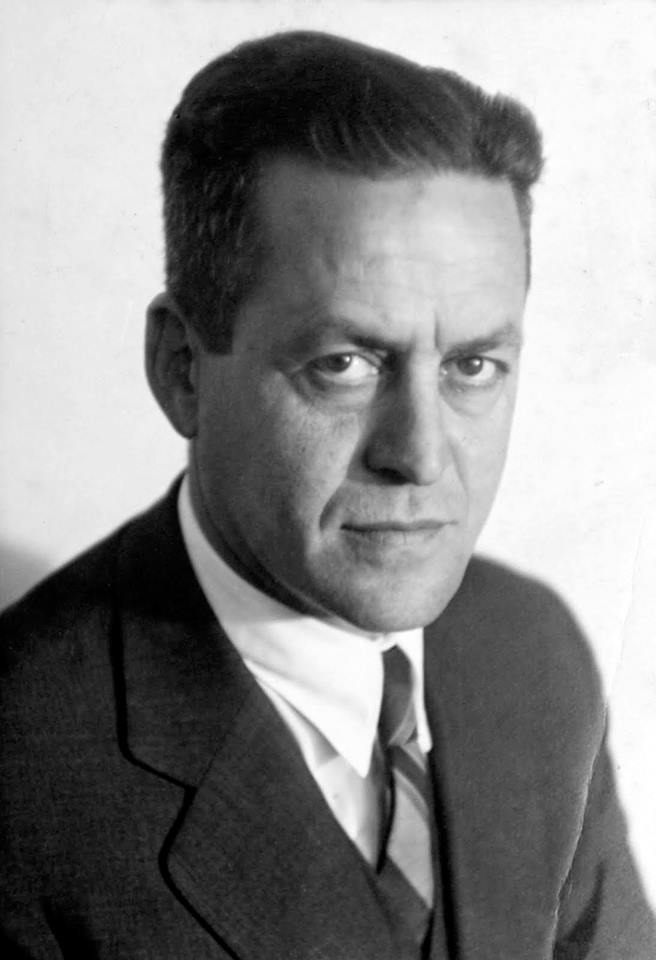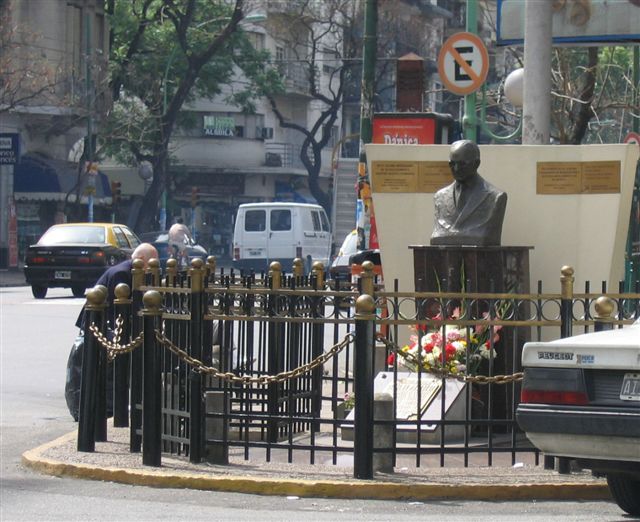|
Malabia (Buenos Aires Underground)
Malabia - Osvaldo Pugliese is a station on Line B of the Buenos Aires Metro. The station was opened on 17 October 1930 as part of the inaugural section of the line between Federico Lacroze and Callao. Overview Malabia Station is located in the Villa Crespo barrio, at the intersection of Avenida Corrientes and Calle Malabia, and named after the latter. The Osvaldo Pugliese part of the name was added in 2010 to commemorate the Argentine tango musician Osvaldo Pugliese. - InfoBAE, 22 September 2010. Before being known as Malabia, the station was called Canning, but when Canning Avenue was renamed Salabrini Ortiz in honour of the poet and journalist |
Avenida Corrientes
Avenida Corrientes () is one of the principal thoroughfares of the Argentine capital of Buenos Aires. The street is intimately tied to the tango and the porteño sense of identity. Like the parallel avenues Santa Fe, Córdoba, and San Juan, it takes its name from one of the Provinces of Argentina. It extends 69 blocks from Eduardo Madero Avenue in the eastern Puerto Madero neighborhood to the West and later to the Northwest, and ends at Federico Lacroze Avenue in the Chacarita neighborhood. Automobile traffic runs from west to east. Line B of the Buenos Aires Metro runs most of its length underneath the street. The ''Asociación Amigos de la Calle Corrientes'' ("Friends of Corrientes Street Association") is a group that collaborates on the urban planning of the street. They have placed commemorative plaques on 40 street corners bearing the distinguished figures from the history of the tango. History It was named Del Sol during the 17th century, San Nicolás from 1738 to 1 ... [...More Info...] [...Related Items...] OR: [Wikipedia] [Google] [Baidu] |
Raúl Scalabrini Ortiz
Raúl Scalabrini Ortiz (February 14, 1898 – May 30, 1959) was an Argentine writer, philosopher, journalist, essayist and poet, friend of Arturo Jauretche and Homero Manzi, and loosely associated with the political group ''Fuerza de Orientación Radical de la Joven Argentina'' (FORJA). Scalabrini Ortiz was born in Corrientes, the son of the naturalist Pedro Scalabrini, who was the director of the museum of the city of Paraná, Entre Ríos. He studied in the Faculty of Exact Sciences and became a land surveyor; then he moved to Buenos Aires and got involved in the literary conflicts of the Boedo and Florida groups. In 1923 he started writing short stories, collected in a book, ''La Manga''; he was then a journalist for the newspapers ''La Nación'', ''El Mundo'' and ''Noticias Gráficas'', and founded and directed ''Reconquista''. In his youth, Scalabrini Ortiz participated in a Marxist group called ''Insurrexit''; he also travelled to several provinces for work reasons, and ... [...More Info...] [...Related Items...] OR: [Wikipedia] [Google] [Baidu] |
Railway Stations Opened In 1930
Rail transport (also known as train transport) is a means of transport that transfers passengers and goods on wheeled vehicles running on rails, which are incorporated in tracks. In contrast to road transport, where the vehicles run on a prepared flat surface, rail vehicles (rolling stock) are directionally guided by the tracks on which they run. Tracks usually consist of steel rails, installed on sleepers (ties) set in ballast, on which the rolling stock, usually fitted with metal wheels, moves. Other variations are also possible, such as "slab track", in which the rails are fastened to a concrete foundation resting on a prepared subsurface. Rolling stock in a rail transport system generally encounters lower frictional resistance than rubber-tyred road vehicles, so passenger and freight cars (carriages and wagons) can be coupled into longer trains. The operation is carried out by a railway company, providing transport between train stations or freight customer facil ... [...More Info...] [...Related Items...] OR: [Wikipedia] [Google] [Baidu] |
Line I (Buenos Aires)
Line I is a planned addition to the Buenos Aires Underground. Line I will run from Parque Chacabuco ("Directorio") to Ciudad Universitaria with 18 new stations. The route length would be 12.6 km. The future of this line (which had the lowest priority in the expansion plans) is currently uncertain since it has been proposed that a Metrobus line be built instead, which would follow the same route as the proposed metro rail line. – EnElSubte, 16 April 2015. The first phase would have a route that went from Parque Chacabuco to Plaz ... [...More Info...] [...Related Items...] OR: [Wikipedia] [Google] [Baidu] |
Corrientes (Line I Buenos Aires Metro)
Corrientes (; Guaraní: Taragüí, literally: "Currents") is the capital city of the province of Corrientes, Argentina, located on the eastern shore of the Paraná River, about from Buenos Aires and from Posadas, on National Route 12. It has a population of 346,334 according to the 2010 Census. It lies opposite its twin city, Resistencia, Chaco. Corrientes has a mix of colonial and modern architecture, several churches and a number of lapacho, ceibo, jacaranda and orange trees. It is also home to one of the biggest carnival and chamamé celebrations in the country. The annual average temperature is . The annual rainfall is around . Transportation Located in the Argentine Littoral, near the Argentina–Paraguay border, the General Belgrano Bridge crosses the Paraná River which serves as the natural border with the neighbouring Chaco Province. On the other side of the bridge is Resistencia, capital of Chaco. To the west and up the Paraná, between Paraguay and Argen ... [...More Info...] [...Related Items...] OR: [Wikipedia] [Google] [Baidu] |
Line D (Buenos Aires Underground)
Line D of the Buenos Aires Underground runs from Catedral to Congreso de Tucumán. The line opened on 3 June 1937 and has been expanded to the north several times. The line is currently 11 km long and has 16 stations, while running approximately parallel to the city's coastline. History Line D was the second line to be built by the Compañía Hispano Argentina de Obras Públicas y Finanzas (CHADOPyF, Hispanic-Argentine Company for Public Works and Finances), following the construction of Line C in 1934. Construction began in 1935 and the first part of the line was inaugurated in 1937 and ran 1.7 km from Catedral (still the current terminus) to Tribunales. Three years later, the section which brought the line to Plaza Italia in Palermo was completed, bringing the length of the line to 6.5 km. The line was not properly extended until 1993 when it was extended to Ministro Caranza, a station named after the Radical politician. Further extensions occurred in t ... [...More Info...] [...Related Items...] OR: [Wikipedia] [Google] [Baidu] |
Scalabrini Ortiz (Buenos Aires Underground)
Scalabrini Ortiz Station is a station on Line D of the Buenos Aires Underground. The station was opened on 23 February 1940 as part of the extension of Line D from Tribunales to Palermo. It is located at the intersection of Avenida Santa Fe and Avenida Scalabrini Ortiz. It was initially known as "Canning", after the nearby avenue, which was in turn named after the British minister George Canning. The avenue was renamed as Raúl Scalabrini Ortiz in 1974, during the government of Juan Perón. The National Reorganization Process restored the initial name in 1976, and renamed it as "2 de abril" during the Falklands War. The name "Scalabrini Ortiz" was restored once more in 1985, during the presidency of Raúl Alfonsín Raúl Ricardo Alfonsín (12 March 1927 – 31 March 2009) was an Argentine lawyer and statesman who served as President of Argentina from 10 December 1983 to 8 July 1989. He was the first democratically elected president after more than ..., and keeps b ... [...More Info...] [...Related Items...] OR: [Wikipedia] [Google] [Baidu] |
Osvaldo Pugliese
Osvaldo Pedro Pugliese (Buenos Aires, December 2, 1905 – July 25, 1995, Buenos Aires) was an Argentine tango musician. He developed dramatic arrangements that retained strong elements of the walking beat of salon tango but also heralded the development of concert-style tango music. Some of his music, mostly since the 1950s, is used for theatrical dance performances. In Buenos Aires, Pugliese is often played later in the evening when the dancers want to dance more slowly, impressionistically and intimately. Personal life His father, Don Adolfo Pugliese (1877–1945), pushed him to work harder; his mother, Aurelia Terragno (1880–1947), often whispered to her son while he was practicing, ''¡Al Colón!'' (''To the Colón!''), referring to Buenos Aires' famous Teatro Colón, where only the country's finest artists play. His other brothers ''Adolfo Vicente'' and ''Alberto Roque'' were violinists. He was married two times, to María Concepción Florio and to Lydia Elman. His fir ... [...More Info...] [...Related Items...] OR: [Wikipedia] [Google] [Baidu] |
Side Platforms
A side platform (also known as a marginal platform or a single-face platform) is a platform positioned to the side of one or more railway tracks or guideways at a railway station, tram stop, or transitway. A station having dual side platforms, one for each direction of travel, is the basic design used for double-track railway lines (as opposed to, for instance, the island platform where a single platform lies between the tracks). Side platforms may result in a wider overall footprint for the station compared with an island platform where a single width of platform can be shared by riders using either track. In some stations, the two side platforms are connected by a footbridge running above and over the tracks. While a pair of side platforms is often provided on a dual-track line, a single side platform is usually sufficient for a single-track line. Layout Where the station is close to a level crossing (grade crossing) the platforms may either be on the same side of the cross ... [...More Info...] [...Related Items...] OR: [Wikipedia] [Google] [Baidu] |
Tango
Tango is a partner dance and social dance that originated in the 1880s along the Río de la Plata, the natural border between Argentina and Uruguay. The tango was born in the impoverished port areas of these countries as the result of a combination of Rioplatense Candombe celebrations, Spanish-Cuban Habanera, and Argentine Milonga. The tango was frequently practiced in the brothels and bars of ports, where business owners employed bands to entertain their patrons. The tango then spread to the rest of the world. Many variations of this dance currently exist around the world. On August 31, 2009, UNESCO approved a joint proposal by Argentina and Uruguay to include the tango in the UNESCO Intangible Cultural Heritage Lists. History Tango is a dance that has influences from African and European culture. Dances from the candombe ceremonies of former African enslaved people helped shape the modern day tango. The dance originated in lower-class districts of Buenos Aires and Montev ... [...More Info...] [...Related Items...] OR: [Wikipedia] [Google] [Baidu] |
Barrio
''Barrio'' () is a Spanish language, Spanish word that means "Quarter (urban subdivision), quarter" or "neighborhood". In the modern Spanish language, it is generally defined as each area of a city, usually delimited by functional (e.g. residential, commercial, industrial, etc.), social, architectural or morphological features. In Spain, several Latin America, Latin American countries and the Philippines, the term may also be used to officially denote a division of a municipality. ''Barrio'' is an arabism (Classical Arabic ''barrī'': "wild" via Andalusian Arabic ''bárri'': "exterior"). Usage In Argentina and Uruguay, a ''barrio'' is a division of a municipality officially delineated by the local authority at a later time, and it sometimes keeps a distinct character from other areas (as in the Barrios and Communes of Buenos Aires, barrios of Buenos Aires even if they have been superseded by larger administrative divisions). The word does not have a special socioeconomic connotat ... [...More Info...] [...Related Items...] OR: [Wikipedia] [Google] [Baidu] |





.jpg)